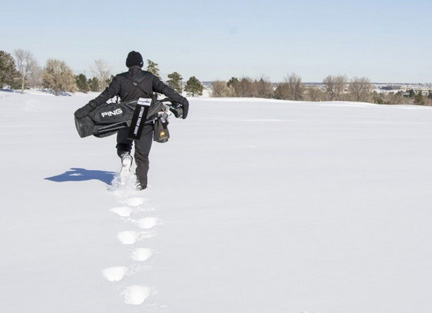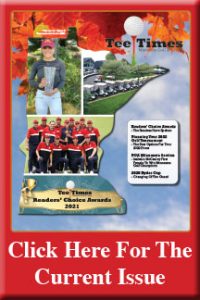If I Was… Looking To Improve Over The Winter
By Jim McNaney
It seems like I write something like this every year, but every year I get asked, “Why should I worry about golf in the off-season?” So here I go again, but this year I’ve got some new advice. Maybe these tidbits will make the difference in helping golfers play better next year.
Take A Break
That’s right, I am actually suggesting that putting the clubs away for a while might not be such a bad idea. When my oldest daughter was growing up playing competitive softball, we got advice from a whole host of people. Some suggested that she should continue throwing… every day as a matter of fact. The thinking was that if she kept throwing there would be no “rust” in the spring. Others suggested that she follow a weekly throwing and hitting routine: hitting 3 days a week and throwing on the alternate 3 days. Then take one day off to “recover.”
Finally, a very wise and respected softball coach said, “She needs to take a break.” The idea was if she took a break, she could let her body heal from the long spring, summer and fall seasons. Additionally, the break would give her time to “get away from the game” to prevent burnout. He did say that she should keep active each day but nothing softball specific.
After talking it over with my daughter, we came the conclusion that taking a break would be the route we would take. It was a great call.
After the fall season, we mapped out 8 weeks of no softball. Over that time, she would continue to stretch and maybe do some light cardio. The idea was to let her body heal, but also continue to promote her health in general. After the 8-week break, she could start swinging a bat a couple times a week and throwing maybe once to twice a week. We started everything out very lightly and gradually built up the repetitions. By spring, she was itching to get back on the field and actually had one of her best seasons to date.
When it comes to golf, I am going to advocate the same thing. Take a break. I am not saying stop now. The season is still “in full swing” (pun intended). Autumn is probably the best time of the year to play golf in Minnesota, but when the cold air of November hits, take a few weeks off. Put the clubs away and stop. Enjoy Thanksgiving and college football… in moderation of course.
Stretch It Out
While you are on your swing sabbatical, put together a stretching program. I have to admit, I’m not the most flexible person, nor do I know a ton about personal training. For those reasons, I look to trained professional like the Personal Trainers at Twin Cities Orthopedics to put together a program that I could easily follow and that would actually increase my range of motion. If you recall, I challenged myself to lose a bunch of weight last year. I was successful at that, but because I was not as limber as I should have been, I struggled with a few injuries this season. This offseason, my goal is injury prevention and I’m told that stretching and strength are the keys. But again, find a professional to map something out for you and then let them lead you.
Break Time Is Over
After a few weeks away from the game, follow Jack Nicklaus’ plan… get with your swing coach before you do anything else. Just like with the stretching program, get with your coach and put together a plan for the rest of the winter. Don’t have a coach? Get one!
For my students, we start with measuring their “stock” swings and see if anything has gotten better from the stretching program. Then we prioritize the areas of the game we need to focus on before the season hits. This plan includes lessons, practice time and club fittings. The lessons and practice are obvious, but it really does help to schedule each of those out to keep on track.
Why The Fitting?
First, we need to see if there is anything in the student’s bag that might be hindering their development. Second, we want to see if there are any innovations or new product introductions that will help them improve. If everything in their bag is good… fine… at least we know what we are working with. If we see opportunities to improve, we act on them.
Whatever your plan, stick to it. Do your best to follow through each week and measure your improvement.
A note of caution; when spring has sprung, don’t put too many expectations on yourself. You just went through an offseason plan, but that does not mean you are ready to go on the PGA TOUR. Make sure your early season expectations are realistic. Start small and let the season play out. If you’ve done your work in the offseason, you’ll be ready so don’t sabotage it by putting too much pressure on yourself to perform.
At the end of the day, the goal of this type of off-season plan is to help you be excited to play golf again and maybe get a little better.







